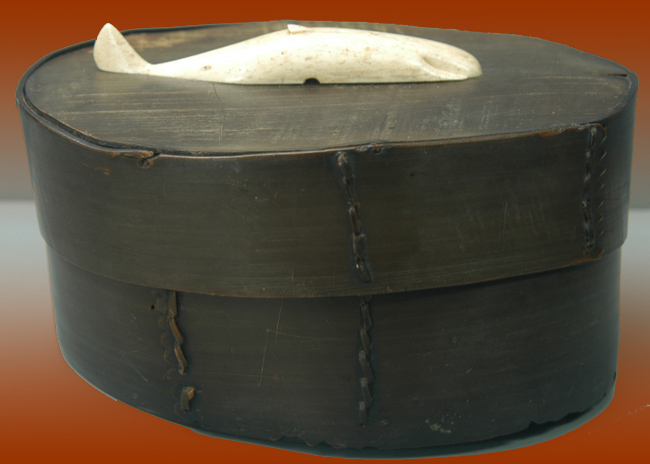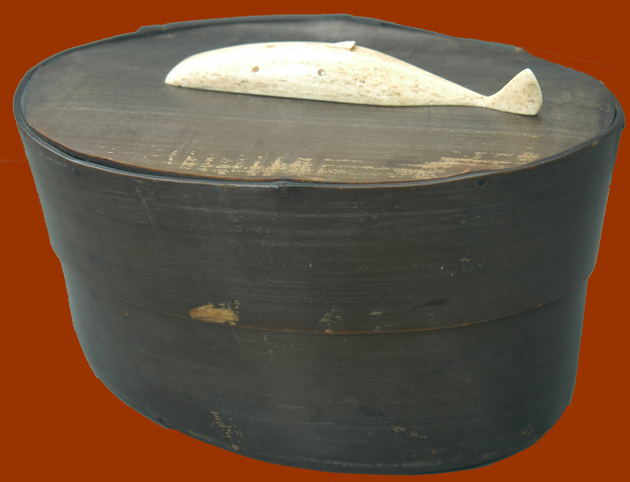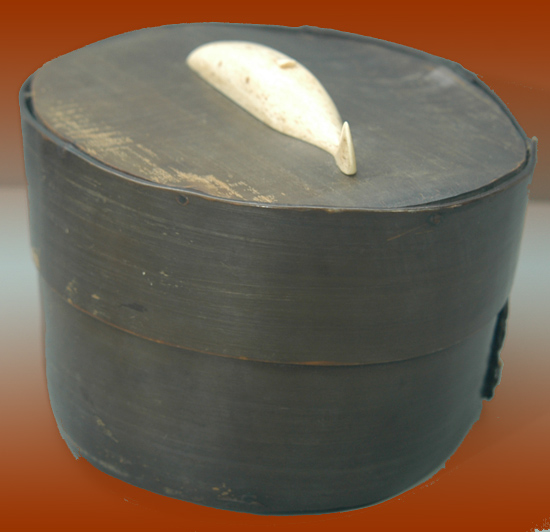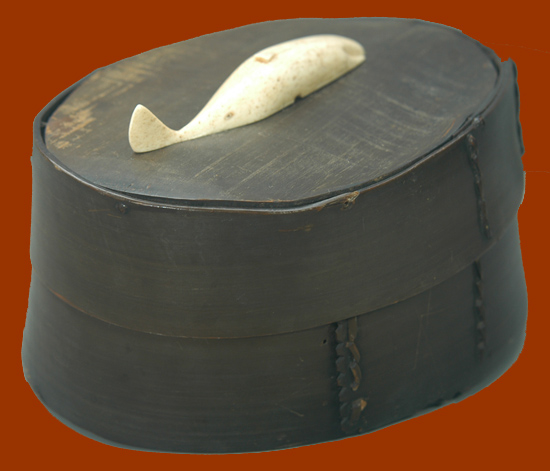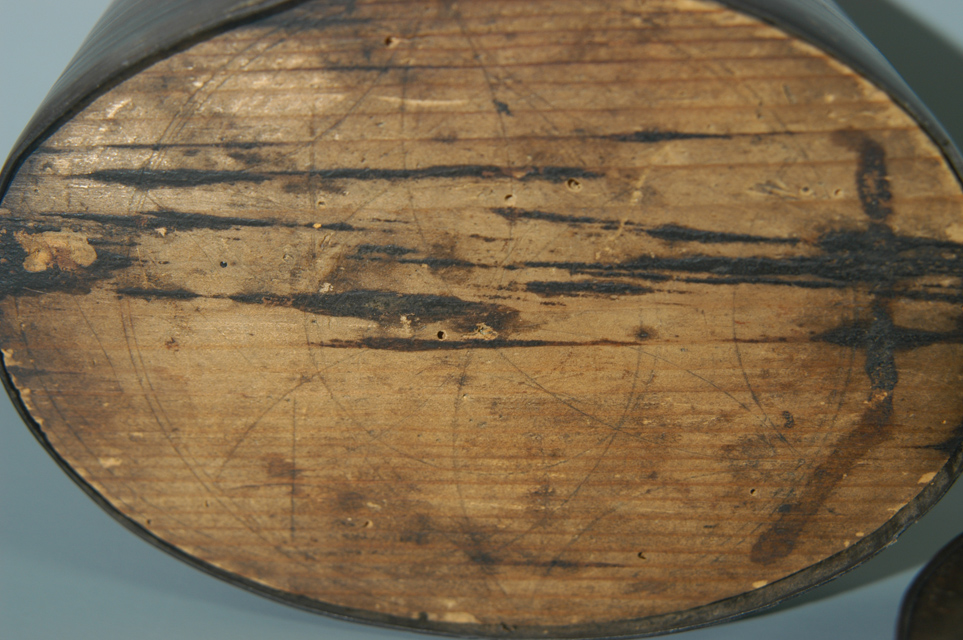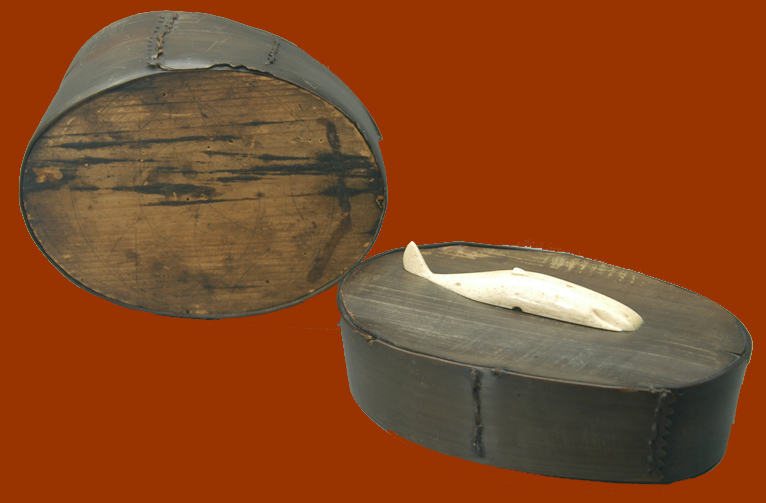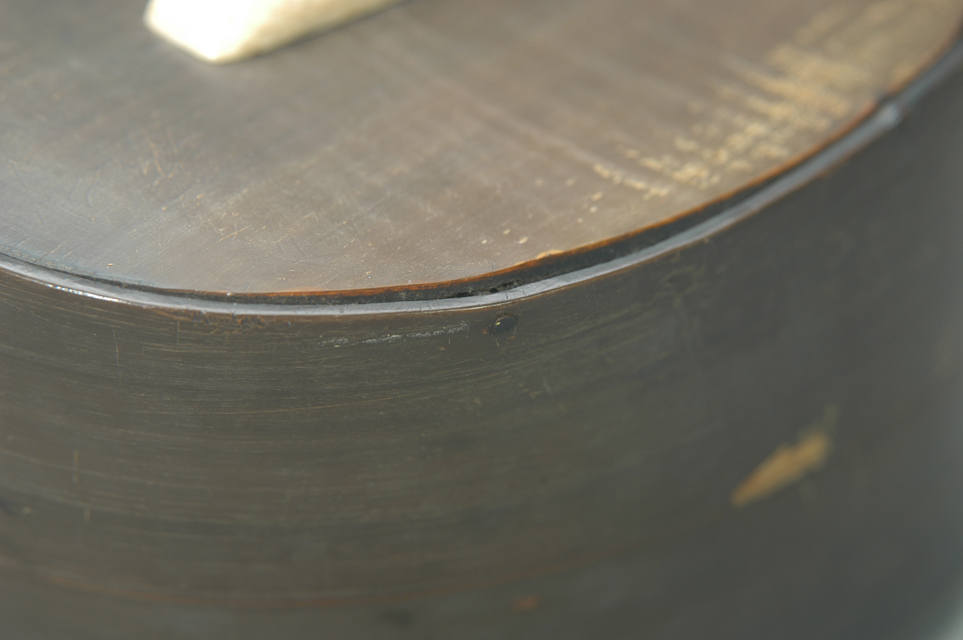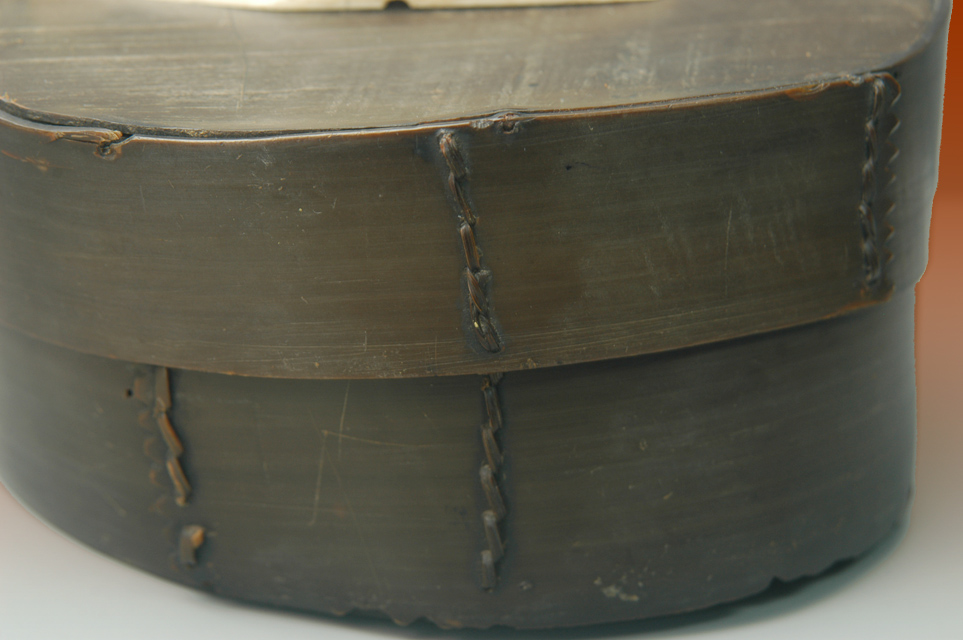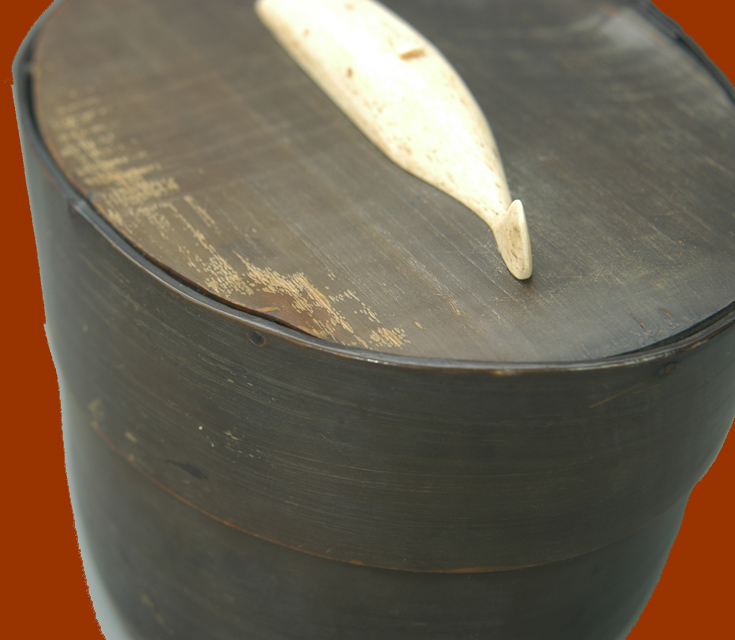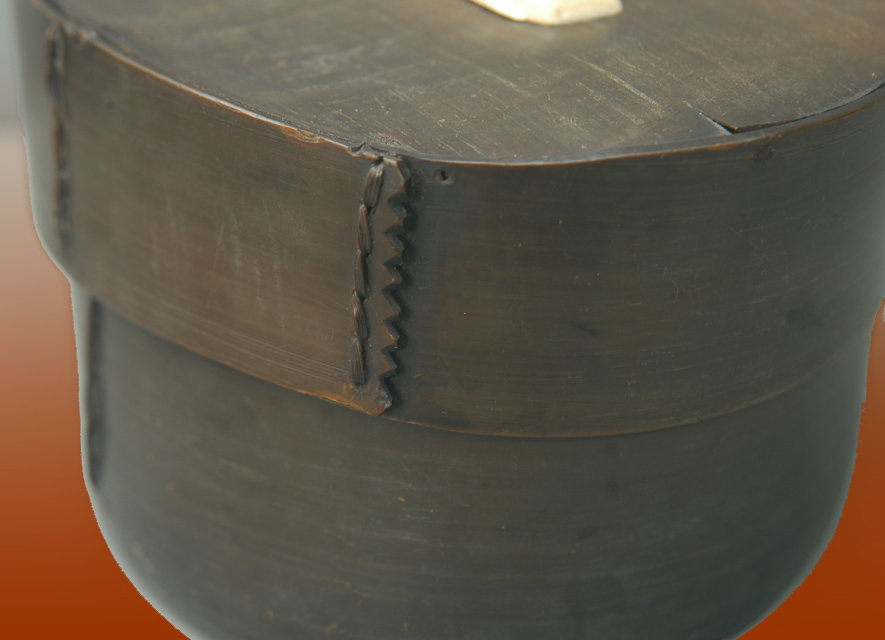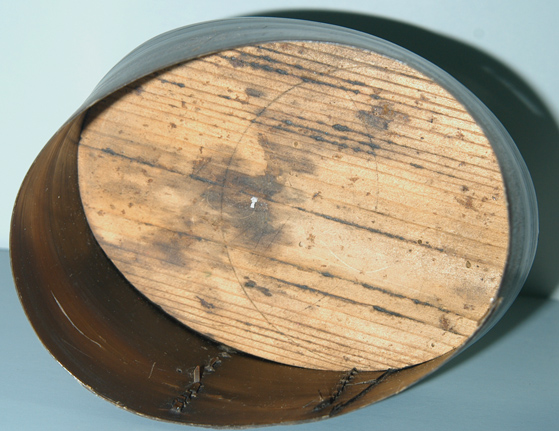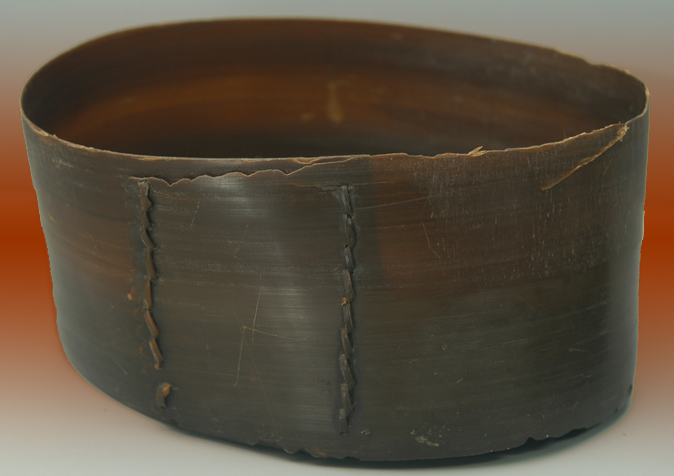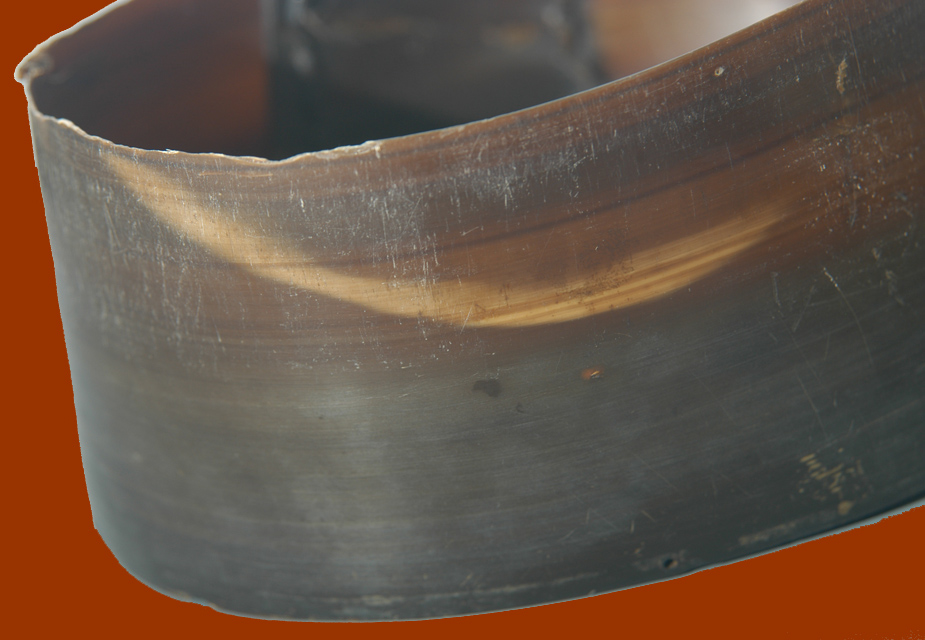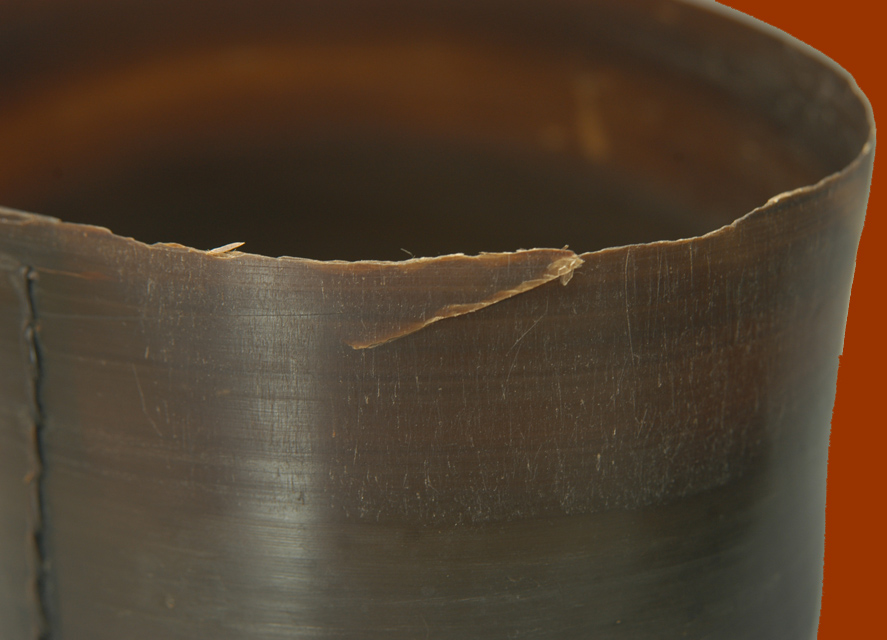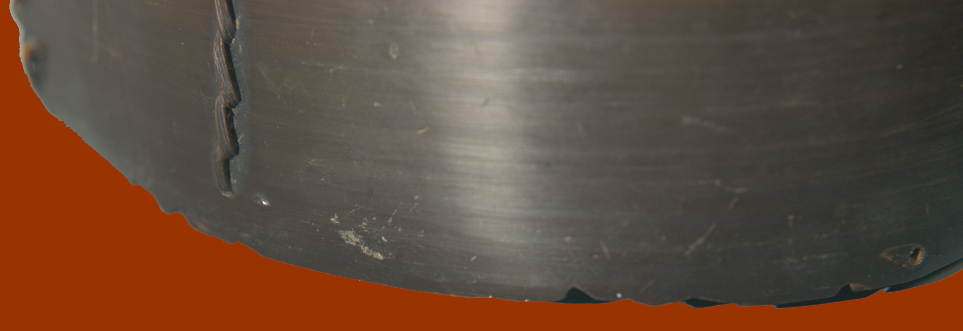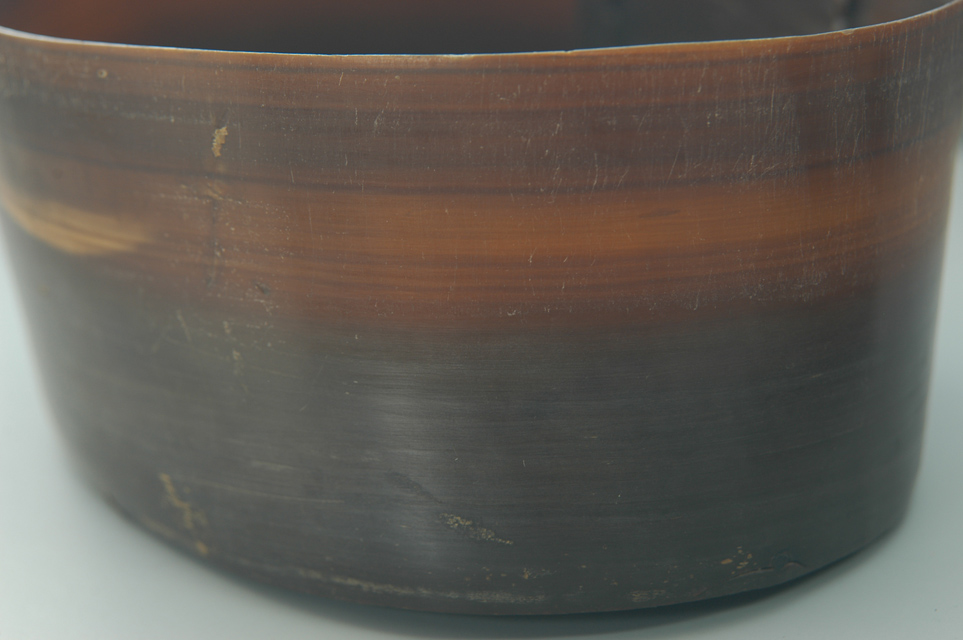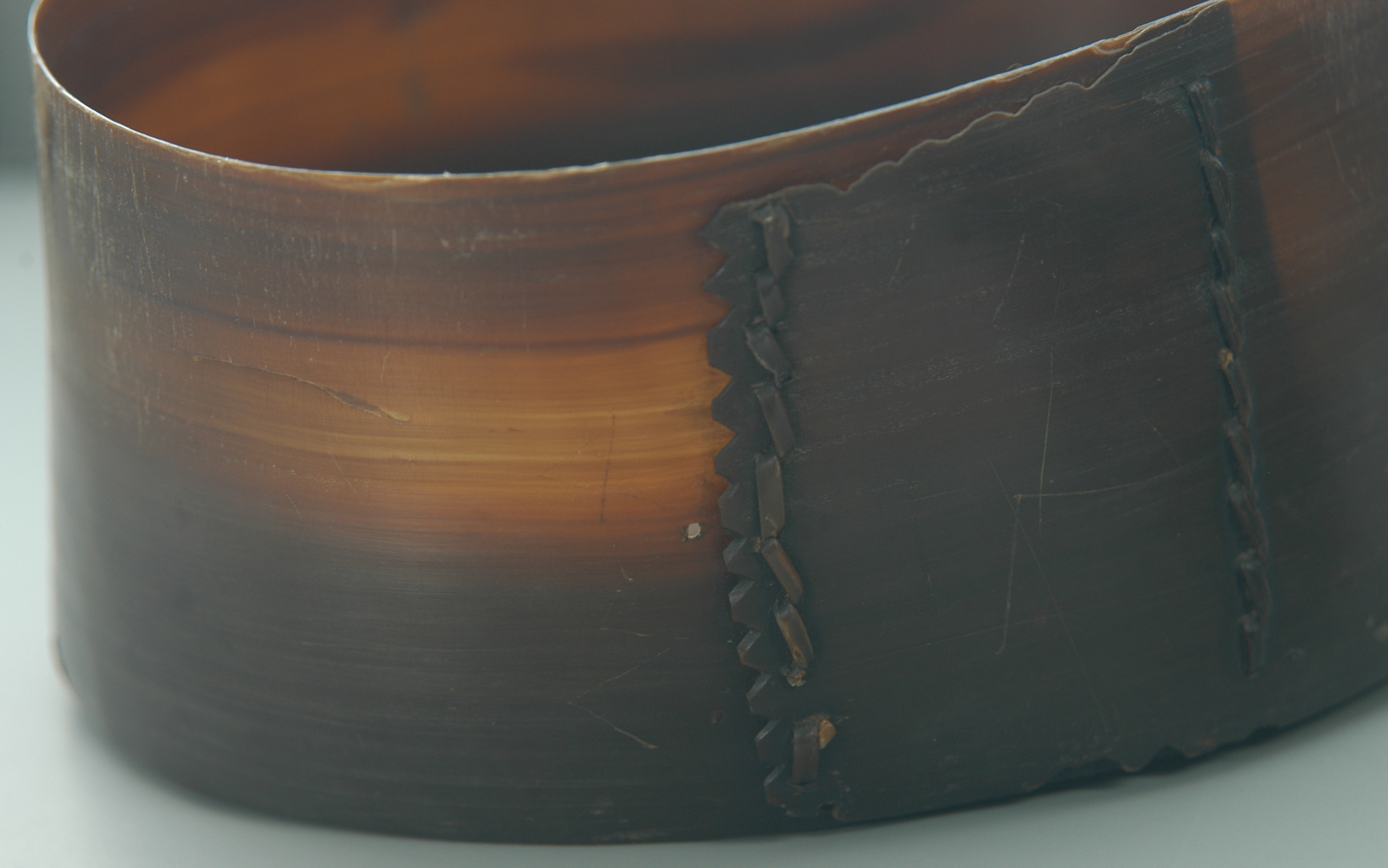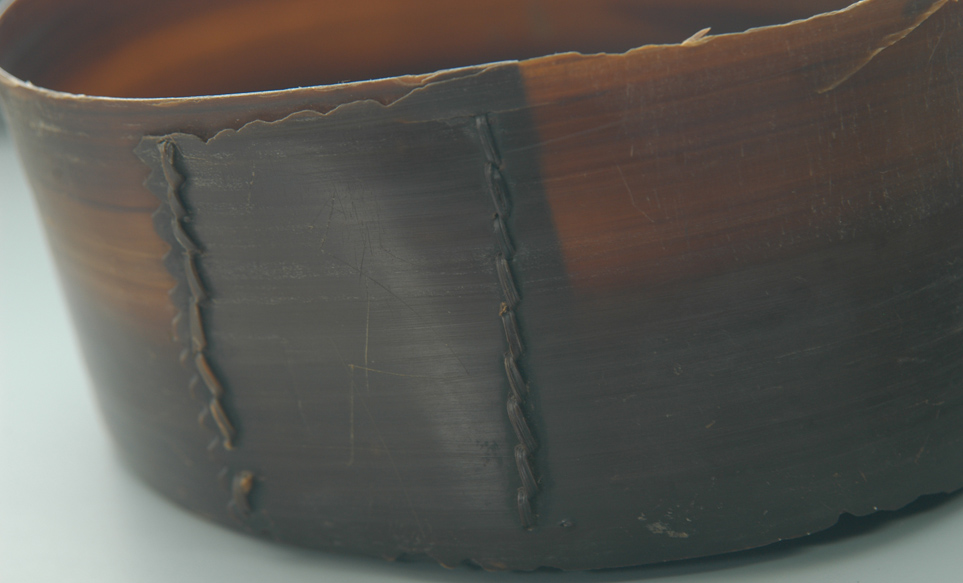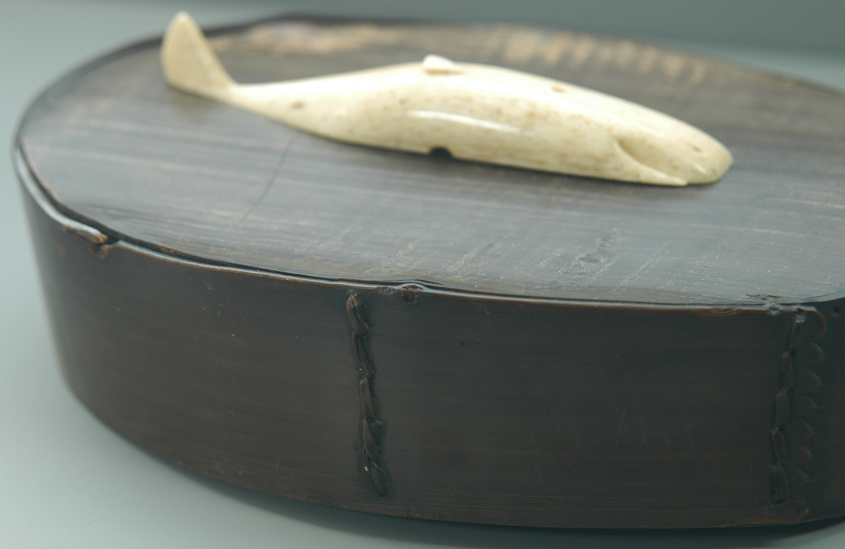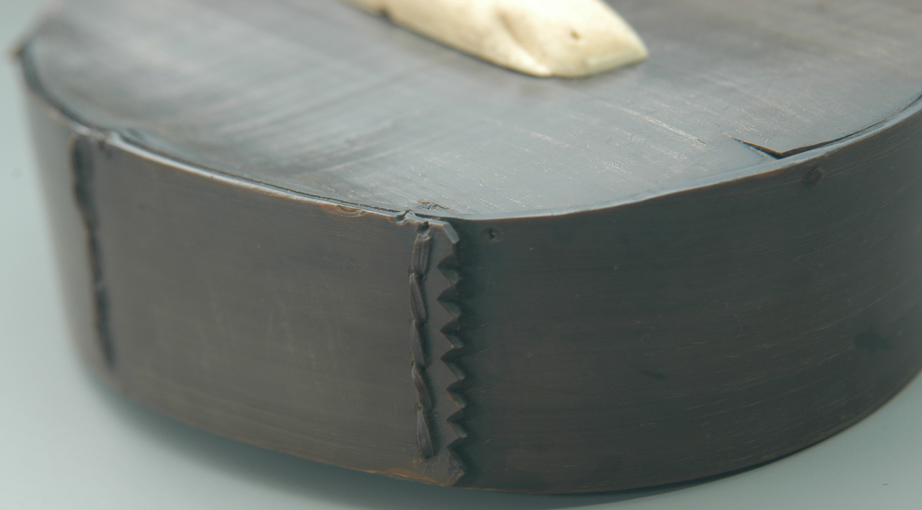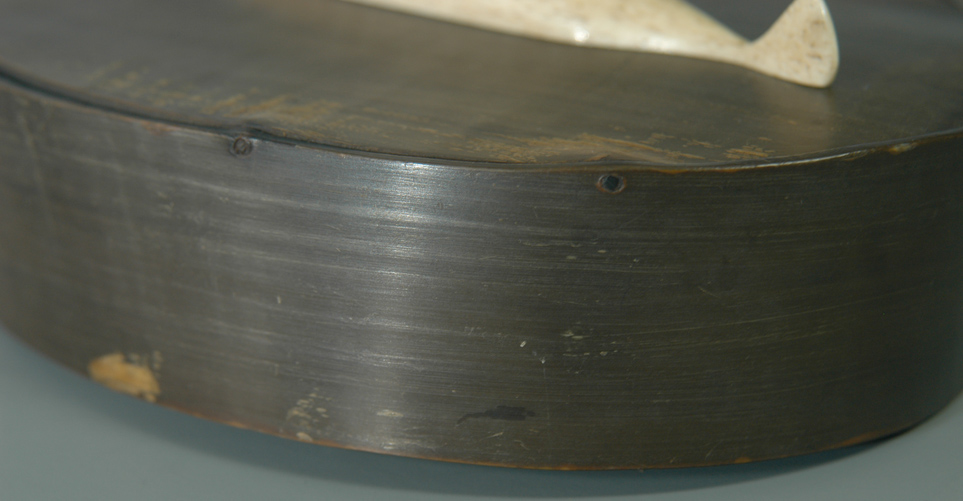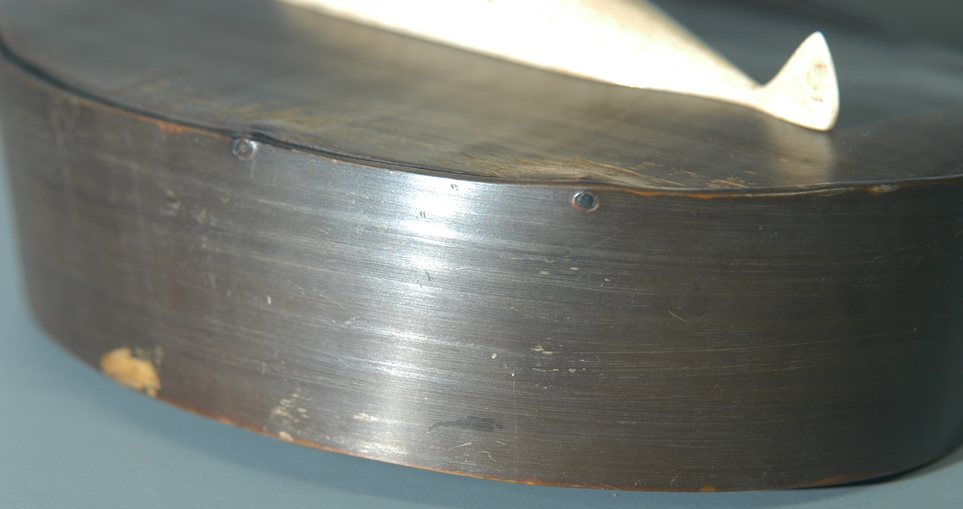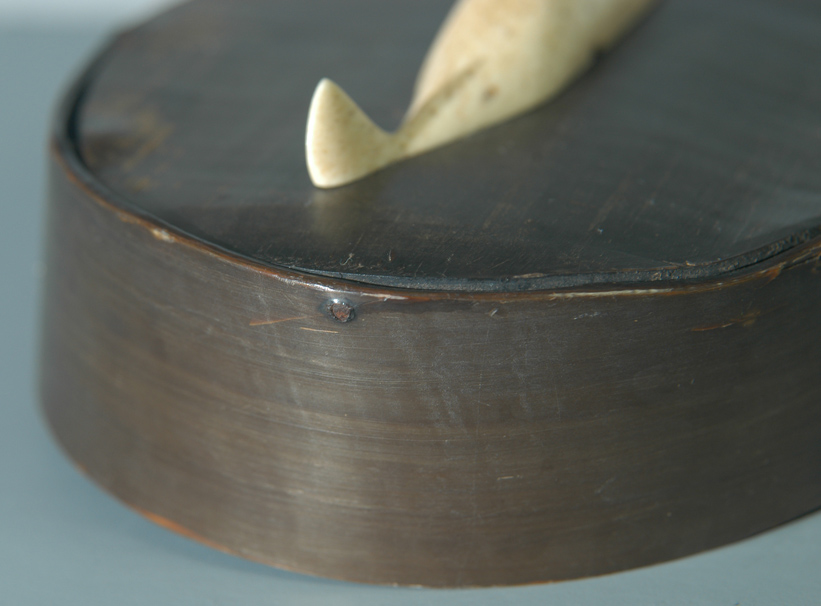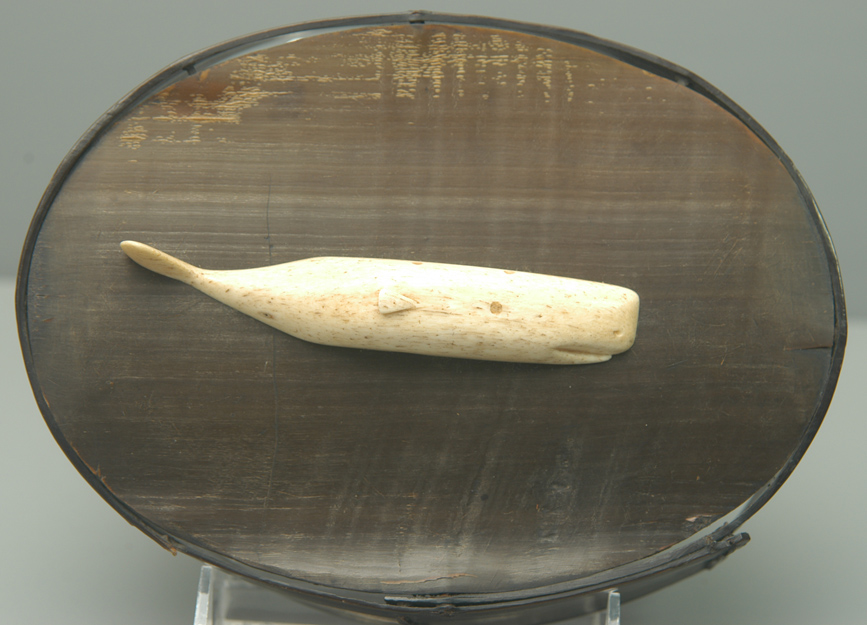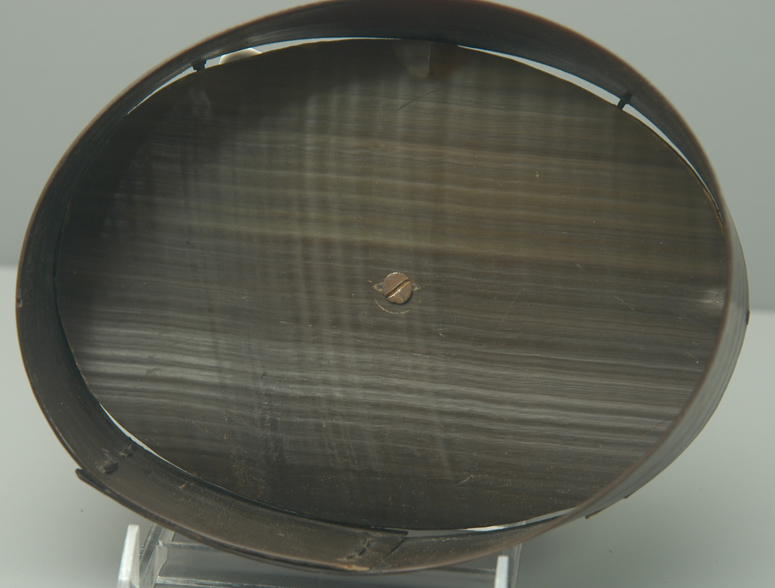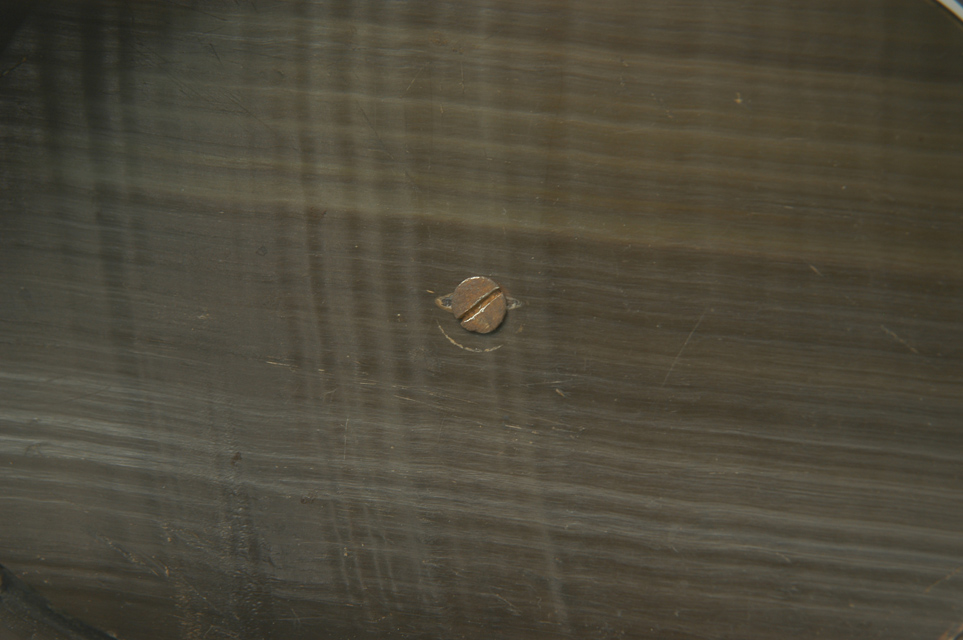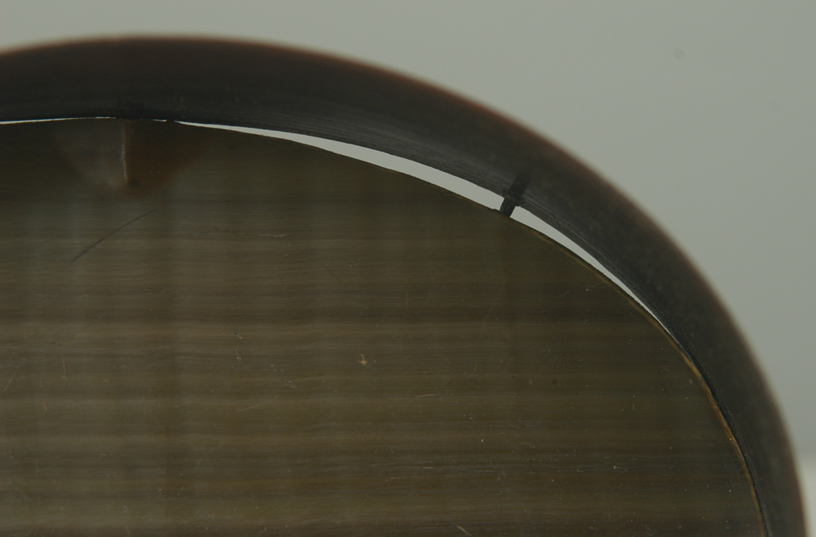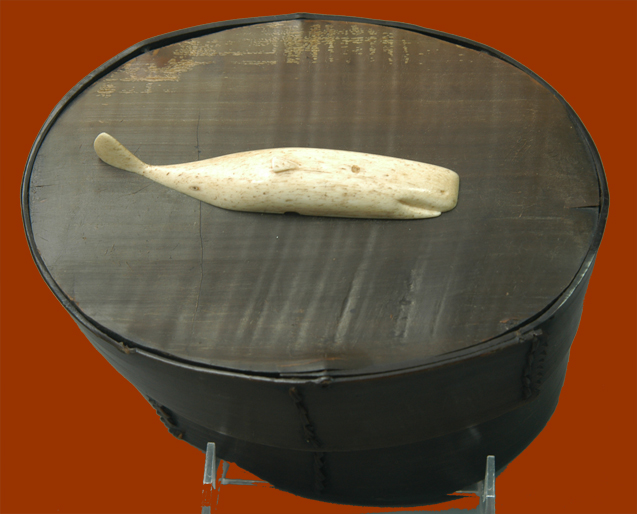
This is a wonderful 19th century ditty box of whale baleen, topped with a bone carved sperm whale. Sailors spent months aboard whaling vessels and spent much of their downtime amusing themselves by making items for themselves and for their loved ones. Collectors have valued these sailor-made items since the roots of antique collecting in the late 19th and early 20th centuries. Ditty boxes and bags were made by sailors to keep their personal items and small tools. It typically contained items of personal hygiene and sewing instruments. Often these items were also carved by the sailor while out at sea. The body of this wonderful box is baleen, which for thrust-feeding whales, such as humpback whales, is used as a trap to keep fish caught in their mouth while allowing them to expel the gallons of water that entered their mouth with the fish. A thrust feeding whale opens his mouth when he thrusts through a school of fish. The fish are swallowed, but so are gallons and gallons of water. The whale must expel the water, so when he submerges, the water is forced back into the ocean and the baleen acts as a trap to keep the fish inside his mouth. I learned this recently on a whale-watching expedition. The piece of baleen that the whale naturalist showed us was large enough to have made this box.
This great oval box is laced together on the sides and the top and bottom are pegged with wood. The ends of the baleen used for the sides is serrated, which adds to the beauty. The bottom of the box is wood and has intersecting circles drawn which give the impression of a compass. The top of the box is graced with a naïve carving of a sperm whale, likely carved from whale bone. The box is quite wonky as it has warped with age. We all know that turned wood ages "out-of round" and this, essentially is what this baleen box has done. Baleen warps easily as it ages and I really love the wonkiness of the shape of this box. Luckily, the top and bottom have changed shape together and the top and bottom still fit quite well and the top can still be removed. Once the top is removed, the light shows through the sides so that you see all of the lovely colors of the baleen. The carved whale is attached to the box with a 19th century flat-head screw. At the bottom of the whale's body is a drilled half-circle, which I believe was made to assist in holding the whale in place while being screwed in from below. The box measures about 7 1/4" x 5 3/8" x 3 5/8" tall. There are separations where the sides meet the top and bottom. The side has a crack at the inside top which you can see in one of the photos on page 2. There is a small, slightly lifted crack at edge of the top (also seen in detailed photos). Various, non-intrusive scuffing of the baleen.
I can email some of these photos to you in larger format if you can tell me what aspects you want to see more closely.
This is a really special piece of marine and nautical history. Rare and wonderful. Don't miss it!
(#5180) $3250
Check out the sailor-made sewing instruments also currently offered for sale. You can fill up the ditty box with these wonderful ditties!
This is a wonderful 19th century ditty box of whale baleen, topped with a bone carved sperm whale. Sailors spent months aboard whaling vessels and spent much of their downtime amusing themselves by making items for themselves and for their loved ones. Collectors have valued these sailor-made items since the roots of antique collecting in the late 19th and early 20th centuries. Ditty boxes and bags were made by sailors to keep their personal items and small tools. It typically contained items of personal hygiene and sewing instruments. Often these items were also carved by the sailor while out at sea. The body of this wonderful box is baleen, which for thrust-feeding whales, such as humpback whales, is used as a trap to keep fish caught in their mouth while allowing them to expel the gallons of water that entered their mouth with the fish. A thrust feeding whale opens his mouth when he thrusts through a school of fish. The fish are swallowed, but so are gallons and gallons of water. The whale must expel the water, so when he submerges, the water is forced back into the ocean and the baleen acts as a trap to keep the fish inside his mouth. I learned this recently on a whale-watching expedition. The piece of baleen that the whale naturalist showed us was large enough to have made this box.
This great oval box is laced together on the sides and the top and bottom are pegged with wood. The ends of the baleen used for the sides are serrated, which adds to the beauty. The bottom of the box is wood and has intersecting circles drawn which give the impression of a compass. The top of the box is graced with a naïve carving of a sperm whale, likely carved from whale bone. The box is quite wonky as it has warped with age. We all know that turned wood ages "out-of round" and this, essentially is what this baleen box has done. Baleen warps easily as it ages and I really love the wonkiness of the shape of this box. Luckily, the top and bottom have changed shape together and the top and bottom still fit quite well and the top can still be removed. Once the top is removed, the light shows through the sides so that you see all of the lovely colors of the baleen. The carved whale is attached to the box with a 19th century flat-head screw. At the bottom of the whale's body is a drilled half-circle, which I believe was made to assist in holding the whale in place while being screwed in from below. The box measures about 7 1/4" x 5 3/8" x 3 5/8" tall. There are separations where the sides meet the top and bottom. The side has a crack at the inside top which you can see in one of the photos on page 2. There is a small, slightly lifted crack at edge of the top (also seen in detailed photos). Various, non-intrusive scuffing of the baleen.
I can email some of these photos to you in larger format if you can tell me what aspects you want to see more closely.
This is a really special piece of marine and nautical history. Rare and wonderful. Don't miss it!
(#5180) $3250

